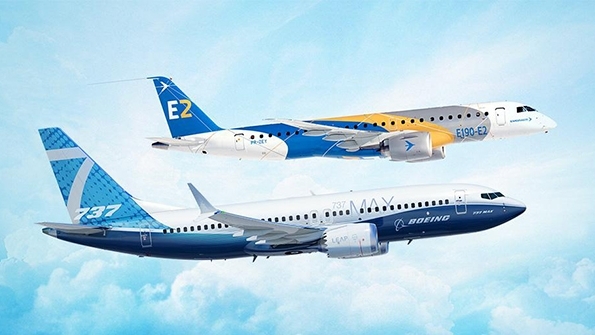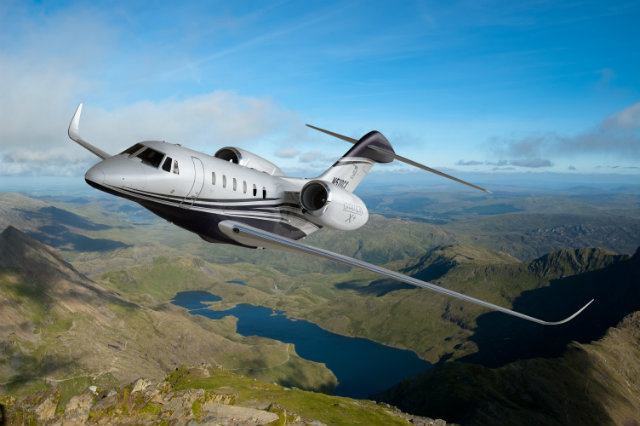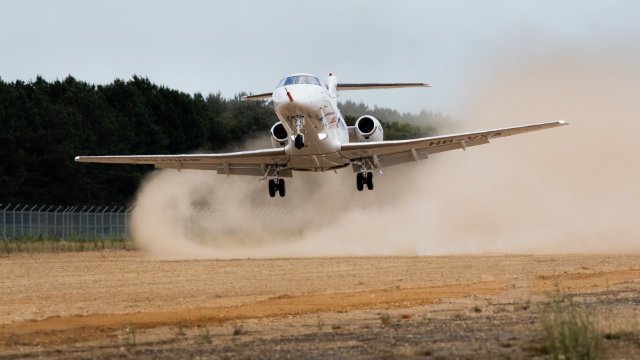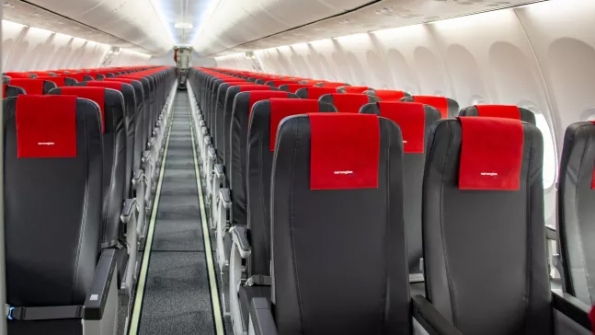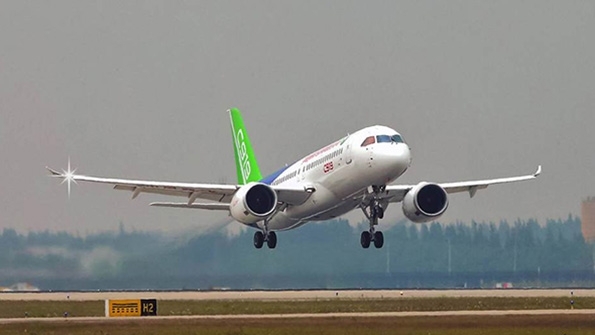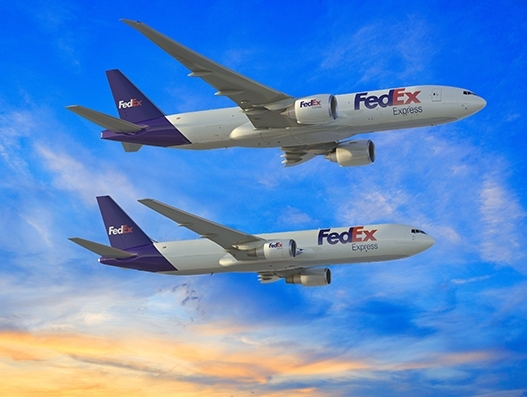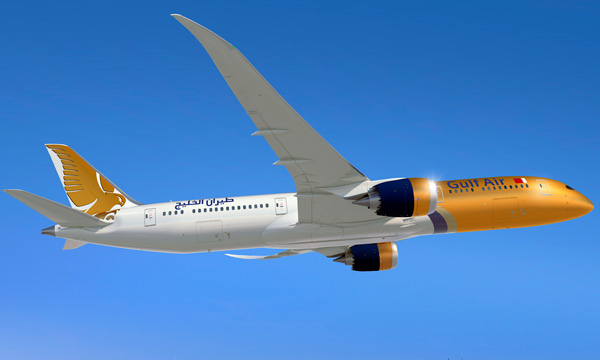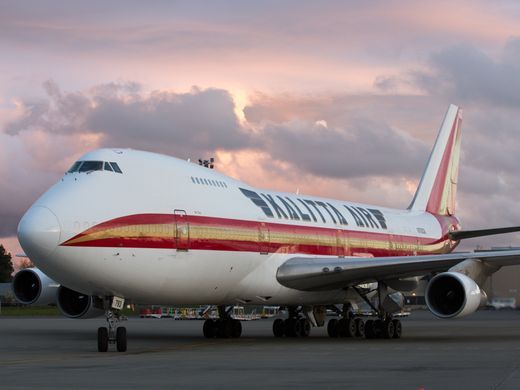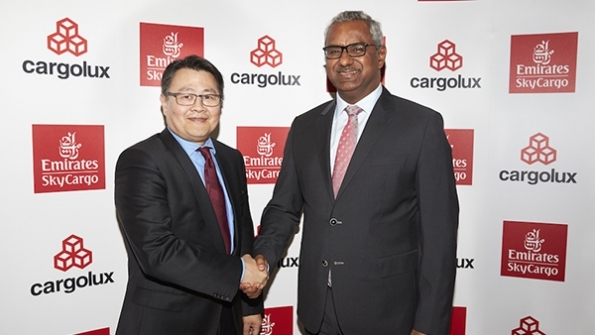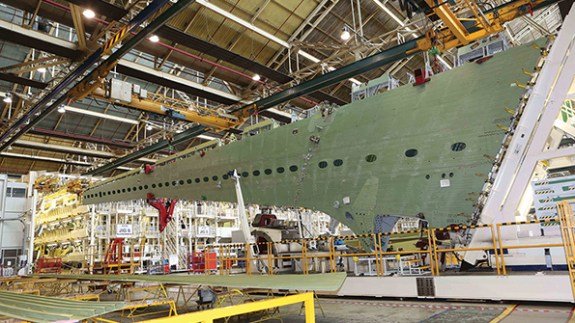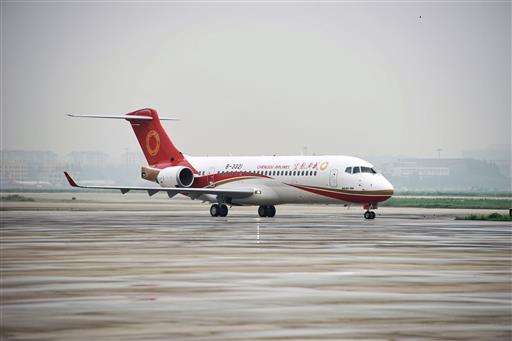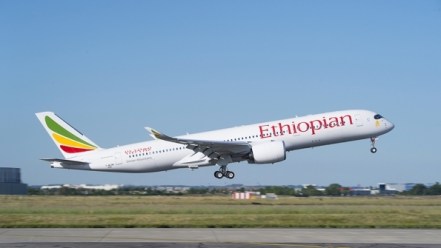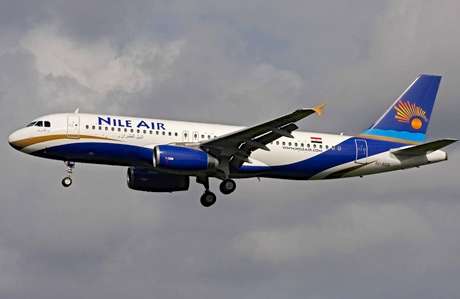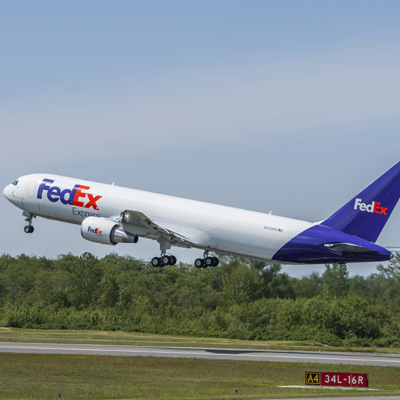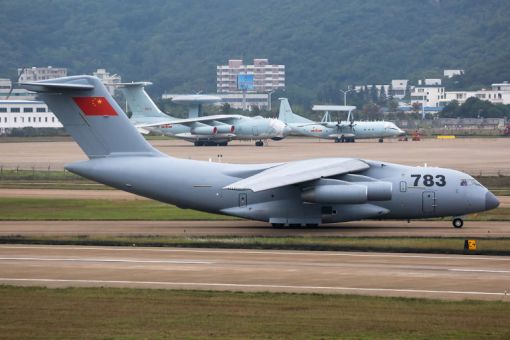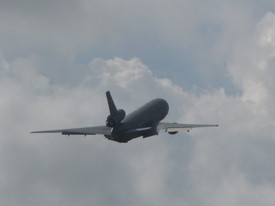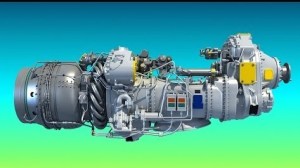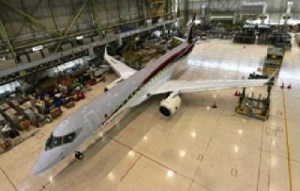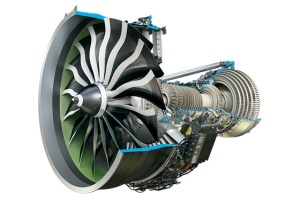ON THE BOEING FRONT
Boeing to Model Potential Spread of Pathogens Inside Aircraft Cabin
Boeing appointed an executive on Thursday, May 14, to lead the company’s Confident Travel Initiative, the plan that intended to help people get back on planes.
Boeing named Mike Delany, currently vice president of digital transformation at Boeing Commercial Airplanes, to the role, which aims to “minimize air travel health risks” in a Covid-19 world.
“As air travel slowly begins to resume and restrictions ease around the globe, health and safety remain our top priorities,” said Boeing CEO Dave Calhoun in the company’s news release. ”Mike’s deep technical expertise, leadership skills, industry knowledge and great passion for our customers make him uniquely qualified to lead this effort.”
Delany will work with Boeing customers to design and implement policies regarding facial coverings, plane cleaning, and temperature checks. The checks will have to be completed before boarding, adding another level of complexity for travelers and airlines.
Boeing also referenced its commitment to air quality when announcing the new role. All Boeing planes are equipped with high-efficiency particulate air, also known as HEPA, filters, ”similar to those used in hospitals and industrial clean room.” The company says HEPA filters are better than 99.9% effective at removing particulates including viruses.
Air filtration helps, but it doesn’t eliminate the risk of disease transmission. Bacteria and viruses are viable on surfaces—such as seat-back pockets—for some time after being deposited by a cough or sneeze.
Boeing hopes modeling will predict how the virus might spread through aircraft with differing seating configurations.The company hopes to determine how variables such as coughing (with or without masks) and use of hand sanitizer might affect potential contagion.
“We are using science as opposed to anecdote…and emotionally-driven responses,” says Delany, who is also Boeing’s vice-president of digital transformation.
Source: Boeing/Barron’s/Picture Shtterstock
ON THE AIRBUS FRONT
Airbus Opens A220 Hanger in Mobile, Alabama
Airbus celebrated a pair of milestones at its commercial aircraft production in Mobile, Alabama; announcing the official inauguration of production activities in its newly built final assembly line hanger and the start of the first U.S.-built A220 for JetBlue.
The new 270,000-sq-ft hanger, capable of accommodating assembly of both A220-100 and A220-300 aircraft, has officially opened for business after an 18-month construction project. It houses five primary assembly stations where workers attach major airframe component assemblies for a completed aircraft in a flow line process. Airbus began producing A220 aircraft in Mobile in August 2019, using space in an existing A320 final assembly line hanger, and newly built support hangers. With the completion of the new hanger, the Airbus production site in Alabama has doubled in size.
Airbus recently welcomed the first component assemblies destined to become an A220 for JetBlue into the new hanger. JetBlue will become the second customer that takes an A220 from Mobile, following Delta Air Lines. JetBlue expects to take delivery of the first U.S.-made A220 during this year’s fourth quarter.
“The team is excited to start working in their new facility and welcome a new customer,” said Airbus president of A220 USA Paul Gaskell. “It’s a strong endorsement from JetBlue in this challenging time,” said Paul Gaskell, president of A220 USA and head of A220 Program in Mobile.
Source: Airbus/Airbus Photo
REGIONAL/BUSINESS JETS
Cessna SkyCourier Completes First Flight
The Cessna SkyCourier twin-turboprop prototype lifted off on its first flight Sunday morning May 17 from Beech Field at Textron Aviation’s east campus in Wichita. Piloted by senior test pilot Corey Eckhart and chief test pilot Aaron Tobias, the utility twin flew for two hours and 15 minutes.
“We were very pleased with how the Cessna SkyCourier performed throughout its first flight,” Eckhart said.”It was particularly impressive to see how stable the aircraft handled on takeoff and landing. The Cessna SkyCourier already displays a high level of maturity in its flight characteristics, especially for a first flight.”
“We were able to accomplish everything we wanted on this flight, and that’s an excellent start to the flight test program.”
With an initial order from FedEx for 50 copies of the high-wing airplane and options for 50 more, the SkyCourier is capable of flying 200 ktas powered by two 1,100-shp Pratt & Whitney PT6A-65SC turboprop engines driving 110-inch McCauley propellers. It also features a Garmin G1000 NXi flight deck.
Configurable for both cage and commuter operations, the high-wing turboprop is designed to carry a payload of up to 6,000 pounds. It is equipped with an 87-inch cargo door, a flat floor, and a nearly 70-inch tall and wide cabin to accept three standard LD3 air cargo containers. In passenger configuration, it will have seating for up to 19 passengers, with a netted cabin area for luggage and equipment. It also will be available in a mixed passenger/cargo combination.
Source: Textron Aviation
Boeing Business Jets New Aircraft Development Continues
As the 737 Max crisis rumbles on, Boeing says it is “staying close to VIP customers” on the re-engines narrow body.
Two examples of the BBJ Max 8 have been delivered green to date, and while Boeing is continuing to work on the -9 and -7 variants, it will not give a delivery timeframe for either model.
The pair were originally scheduled for certification and customer handover in 2020 and 2022 respectively. Boeing records 14 orders for the CFM international Leap-1B-powered BBJ Max, most of them -8s- though Boeing Business Jet expects the shorter Max 7 to be the eventual favorite, owing to its 7,000nm(13000km)-range:360nm longer than the -8 and 675nm longer than the -9.
Boeing has also expanded its VIP wide body offering with the introduction in late 2018 of the BBJ777X. The twin-aisle airliner is the updated version of the BBJ 777, of which Boeing has sold 13 examples to date.
Boeing describes the 777X as a “far superior offering”, with GE Aviation GE9X engines and a new, more advanced composite wing.
As of this month two Boeing BBJ Max 8s have been delivered.
Source: Boeing Business Jets/Picture Boeing
OTHER AVIATION NEWS
Air France Terminates A380 Fleet with Immediate Effect
Air France has accelerated plans to phase out its Airbus A380 fleet and will retire the aircraft immediately rather than in 2022 as previously scheduled.
Air France grounded its A380s on March 16 as the coronavirus pandemic began to take a toll on operations, before ultimately suspending the majority of its scheduled passenger flights. Air France-KLM announced on May 20 the “definitive end” of the French carrier’s Airbus A380 operations.
“Initially scheduled by the end of 2022, the phase-out of Airbus A380 fleet fits in the Air France-KLM Group fleet simplification strategy of making the fleet more competitive, by continuing its transformation with more modern, high-performance aircraft with significantly reduced environmental footprint,” the group says.
Five of the Airbus A380 aircraft in the current fleet are owned by Air France or on finance lease. A further four are on operating lease. Air France-KLM says the impact of the A380 phase-out write down is estimated at $547 million dollars and will be booked in the second quarter of 2020 as a non-current cost/expenses. The fleet is powered by Engine Alliance GP7200s.
In December Air France-KLM Group said it was ordering another 10 Airbus A350-900s, which would be used to replace the company’s A380s.
Source: Air France/Picture Air France
Delta to Retire Its 777 Fleet
Delta Air Lines will retire its Boeing 777 fleet by the end of 2020 as the coronavirus crisis continues to disrupt global travel, creating openings for airlines to permanently streamline fleets and save money by shifting to more-efficient aircraft. The move will leave Delta with a single type of ultra-long aircraft: Airbus A350s.
The Atlanta-based airline has 18 777s, including 10 of the long-range 777-200LR variant, according to Cirium fleets data. Nine of these are currently operating and nine are in storage.
Delta’s first 777s joined the fleet 21 years ago, and the airline says it will replace them with its next-generation A350-900s; which burn 21% less fuel than the Boeing jets. Delta has nine A350s in service, four in storage and 12 on order, according to Cirium.
In past weeks the airline used 777s for cargo and repatriation flights between North American and cities in Asia,Europe and Australia.
Source: Delta Air Lines/Picture Delta Air Lines 777-200LR
Airbus and Rolls-Royce Have Axed the E-Fan X Project
Airbus and Rolls-Royce axed the e-FanX demonstrator programs year before the experimental hybrid-electric engine airliner was supposed to fly. The E-Fan X program was launched to explore electric aviation and involved equipping a BAE Systems Avro RJ100 with a hybrid powertrain. But Airbus chief technology officer Grazia Vittadini says the airframer is having to “ navigate the realities” of a world impacted by the corona virus crisis, and concentrate on priorities.
She says Airbus and Rolls-Royce have as a result “jointly decided” to “bring the E-Fan X demonstrator to an end”. “As with all ground-breaking research projects, it’s our duty to constantly evaluate and reprioritize them to ensure alignment with our ambitions,” she adds.
“These decisions are not always easy. But they are undoubtedly necessary to stay the course.” Vittadini points out that the effort to decarbonize the aviation industry is “no small feat”, adding: “to achieve this, we need to re-focus all our efforts on technology bricks that will take us there.” The E-Fan X, launched in 2017, was due to carry out its maiden flight in 2021.
Source: Flightglobal
Mitsubishi Aircraft to Close all Non-Japan Locations, Shelves M100
Mitsubishi Aircraft is closing all non-Japan locations and moving all Spacejet activities back to its headquarters in Nagoya, Japan, above coming in response to cost pressure amid the coronavirus aerospace downturn.
As part of the consolidation to Japan, the company will halt flight testing of its 90-seat SpaceJet M100 regional jet and suspend development of its 76-seat M100, Mitsubishi Aircraft says.
Most effected outside Japan is its operations in the US Northwest. The Mitsubishi Aircraft U.S. headquarters in Renton will close, and flight test operations in Moses Lake will cease operations.
Mitsubishi Aircraft has not announced any change to a plan under which its parent Mitsubishi Heavy Industries will acquire Bombardiers’s CRJ program for $550 million.
Source: Mitsubishi Aircraft/Picture Mitsubishi Aircraft
LATEST NEWS
- BOC Aviation has signed a purchase-and-leaseback agreement with Southwest Airlines for 10 Boeing 737 Max 8 aircraft.
- Emirates largest operator of the Airbus A380 axes the aircraft and seen cutting deliveries.
- Boeing the U.S. Navy received its 100th P-8A aircraft from Boeing on May 14 as the global fleet, which also includes the Indian navy and the Australian and the U.K. airfares approaches 300,000 flight hours.
- Lauda subsidiary of Ryanair plans to cancel all Airbus deliveries and replace them with ones from Boeing.
- American Airlines is parking its fleet of Airbus A330-200s in storage until at least 2022, part of the airline’s broader effort to downsize in response to the Covid-19 Pandemic.
- Air Lease Corp said it would reduce capital expenditure on new jets in a move likely to restrict its-near-term growth; but still support liquidity’s it faces demands from airlines for rental relief seen as crucial to their survival.
- United Aircraft of Russia is set to begin mating the tail and engine pylons for the first llyushin ll-96-400M, which is undergoing assembly at the Voronezh-based VSO plant.
- Saab Aircraft has secured an SKr1.6 billion ($ 165 million) order for an undisclosed number of its Saab 2000 Erieye airborne early warning control (AEW&C) system aircraft.
Source: Air Lease, Emirates,Saab Aircraft,American Airlines, Ryanair, United Aircraft,Boeing
AIR CARGO
Alaska Airlines Transports First Copper River Salmon to Seattle
Alaska Airlines teamed with partners to fly the first catch of salmon from Copper River to Seattle on May 15th. The first to enjoy the fish will be over 200 healthcare workers from the Swedish Medical Center-Ballard.
The first catch of fresh, sustainable Copper River salmon arrived in Seattle on an Alaska Airlines plane. This is not new for the airline. Some Alaskan communities rely on Salmon exports for economic success. In Cordova, Alaska, over 50% of local residents work in the fishing industry. Thanks to air travel, the fish can end up in markets less than 24 hours after being pulled from the water.
Managing director of cargo for the airline, Torque Zubeck, said the following: “ Alaska Air Cargo has been a partner of the Alaska seafood industry. Now more than ever we provide a critical service that directly impacts the economic vitality of the region. In Cordova alone, more than half of residents are directly involved in the fishing industry or related business.”
Chef Douglas will feature the salmon donated by seafood processors and Copper River Marketing Association to create over 200 meals for Seattle-area medical professionals. Alaska Airlines will send pilots, flight attendants, and management employees to be part of the efforts after carrying the fish on its planes.
Source: Alaska Airlines/Picture Alaska Airlines
OTHER NOTEWORTHY NEWS
The Planes in Spain Parked Neatly on the Plain
Dozens of passenger aircraft belonging to European carriers stand idled in neat lines in what has become a giant airplane parking lot amid the flat farmlands of eastern Spain.
Teruel Airport specializes in the storage and maintenance of aircraft, and business has boomed since coronaviris lockdowns globally forced airlines across Europe to ground fleets for several weeks. There is no end in sight for many.
Planes showing the markings of commercial airlines including: British Airways, Lufthansa and Air France stand parked, buffeted by spring wind blowing across the plain.
“Teruel’s climate is dry-semi-desert with more than 250 days of sun per year,” said airport manager Alejandro Ibrahim.
“Also there is very little air traffic congestion which makes it the ideal place for plane preservation and maintenance.”
The airport currently hosts 95 wide-body aircraft, including eight of the world’s largest passenger airliners-the Airbus A380. The number of planes arriving per week to be parked in the airport has doubled since the start of the pandemic. The airport, owned by the local government, has not increased its rates since the beginning of the crisis, Ibrahim said.
The sudden stop to air travel has led airlines struggling to find space to store their planes. In Europe, some airlines have grounded their entire fleets and are storing their aircraft by parking them in airports, including on now-unused runways.
Source: Reuters/Picture spainsnews.com
Researched and Compiled by :
Ed Kaplanian Commercial Aviation Advisor
Contact – ekaplanian@msn.com
Editor: Lee Kaplanian















